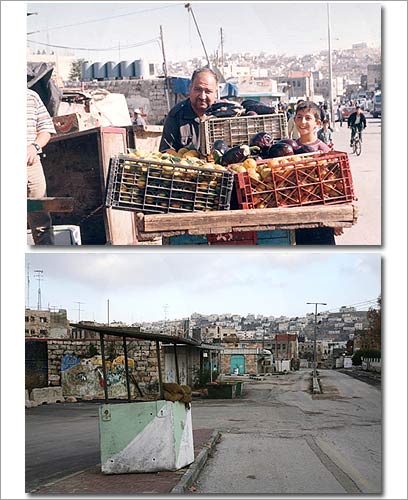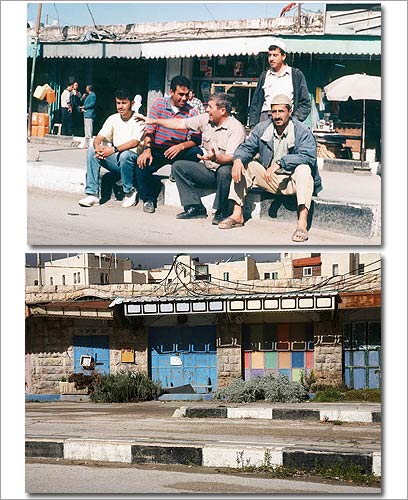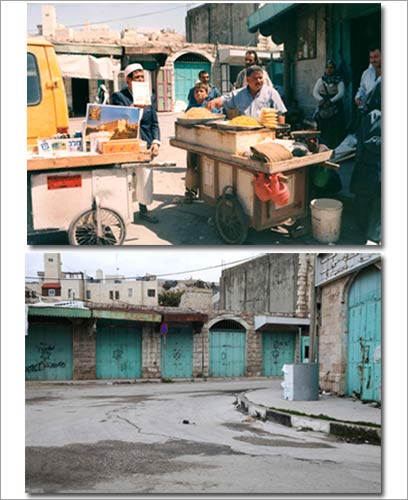
Hebron before and after
Naif Hashalmon, a Palestinian photographer, documented the busy streets of his hometown, Hebron, during the '90s. This year, Activestills photographers returned to the city and documented the deserted streets. Hebron as 'a microcosm of the occupation'
Hebron's streets and markets that during the '90s served as a commercial center for the residents of West Bank, has since turned into a ghost town. Massive emigration out of the city, hundreds of businesses closed, and the almost complete ban on Palestinian traffic, drained the city's livelihood.
A new exhibit displayed throughout the streets of Jerusalem features the work of Palestinian photographer Naïf Hotelman, a Hebron native who documented life in the city during the '90s and the work of Activestills photographers who shot the same streets in 2007.
Nine activists were detained by police for pasting the photos on walls around Jerusalem.


"Hebron is a microcosm of the occupation," said Manor. "It is a ghost town, with no Palestinian traffic. Houses and stores sealed and racist graffiti sprayed on the walls." Activestills photographers said that during their visit to the city, they encountered many army posts and soldiers and a few settlers, but "hardly any Palestinians."
Amos Goldberg of the Bnei Avraham (Sons of Abraham) group explained that the cooperation with Activestills was brought about by the reality in the city. "Our goal is to end the city's occupation and allow the Arab and Jewish resident a respectable existence."











